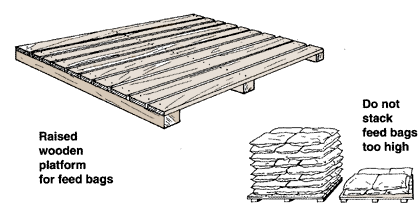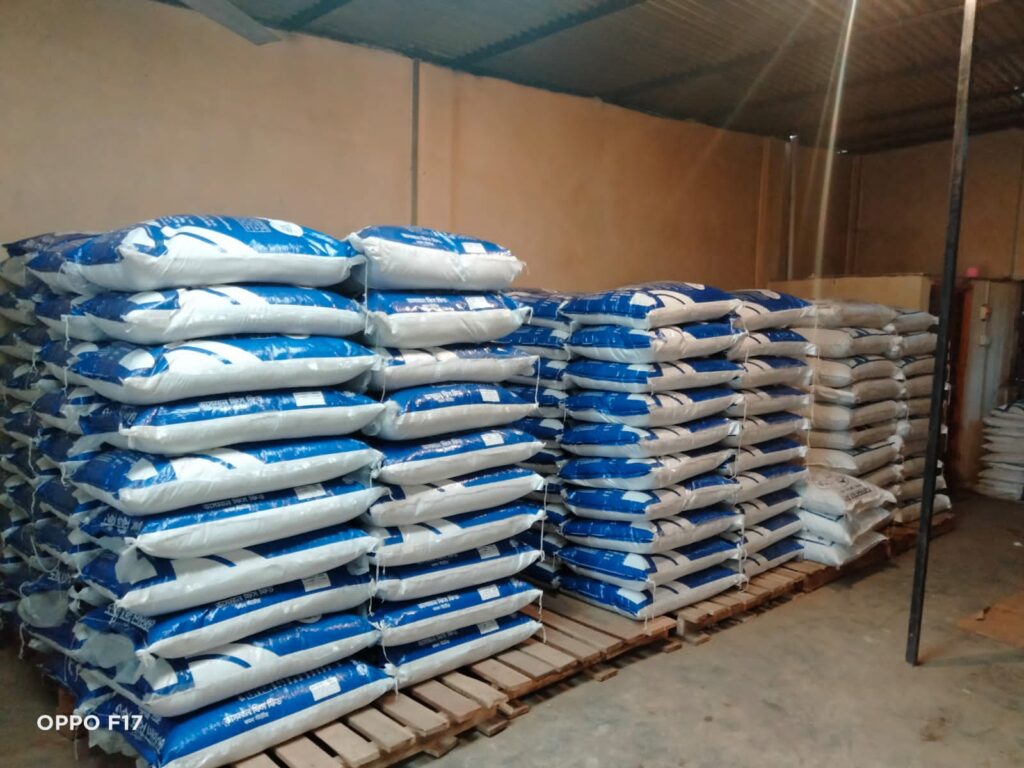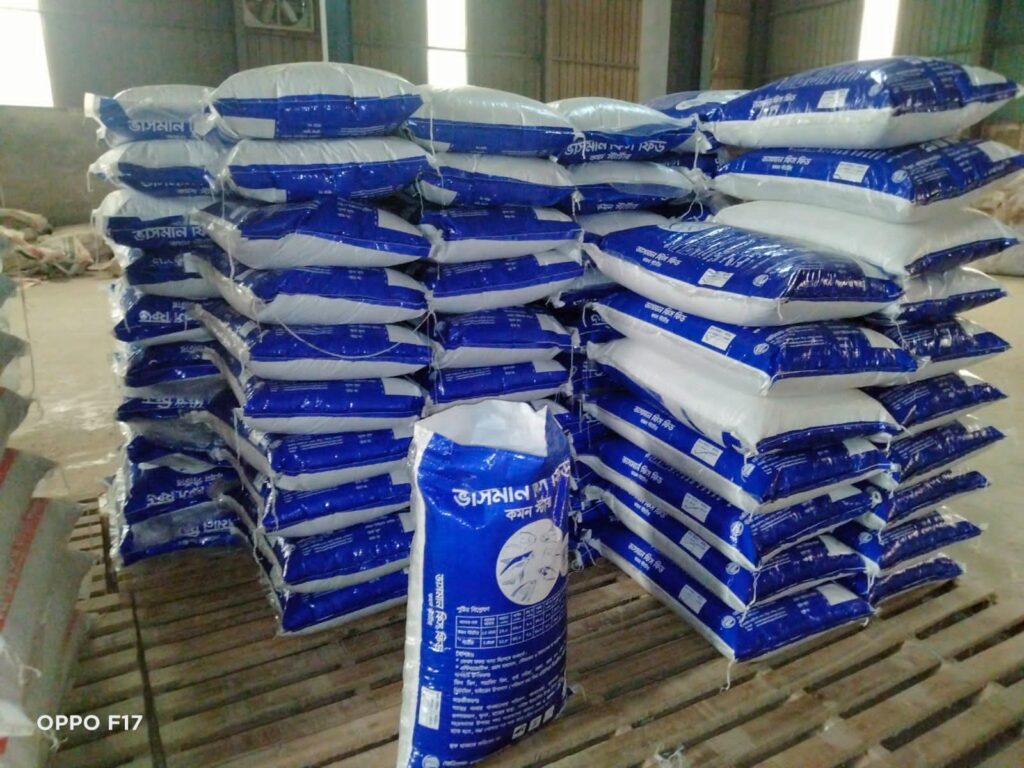5. To reduce such deterioration and loss of feedstuffs to a minimum during their storage on your fish farm, pay special attention to the following points.
(a) Keep the storage areas as dry and cool as possible:
- provide a good roof to protect against rainstorms and sunlight;
- protect the floor from flooding or rising moisture (a raised concrete floor or a wooden platform are best);
- provide good ventilation through the building (it is best to have its length facing prevailing winds and cut openings in these walls, low down on the front wall and high up on the opposite wall).

Close all openings with small-mesh metal netting to prevent the entry of rodents and birds. Make sure the netting is well embedded, to prevent animals passing under it. The presence of a few cats can be very effective in achieving total control of these animals. Lock the door properly. Use ledges to deter ants or termites from entering.
(c) Be particularly selective when buying feedstuffs. Pay only for materials that are dry, not mouldy and not infested by insects. Sieve a sample to check for mites, insect larvae, pupae, animal droppings, etc. The materials should be loose, free-flowing and should not have been overheated inside storage piles.
(d) If bags are used to store feedstuffs, do not stack them too high. If possible, raise these stacks off the ground on wooden platforms.
(e) Improve air circulation around individual stacks by:
- leaving a space between stacks and walls;
- separating individual stacks from each other.
(f) If materials are stored loose, turn them over from time to time to make sure they are dry and do not overheat in the centre of the pile. You can use a thermometer on a simple rod to test material temperature.
(g) Manage your stocks well, limiting their storage time (see chart) to a minimum by:
- buying reasonable quantities and avoiding excessive stocks;
- rotating your stocks carefully, using the oldest feedstuffs first,
- storing the newest materials behind, if necessary;
- labelling your stocks clearly, with name and date of entry; and
- using damaged bags first.



